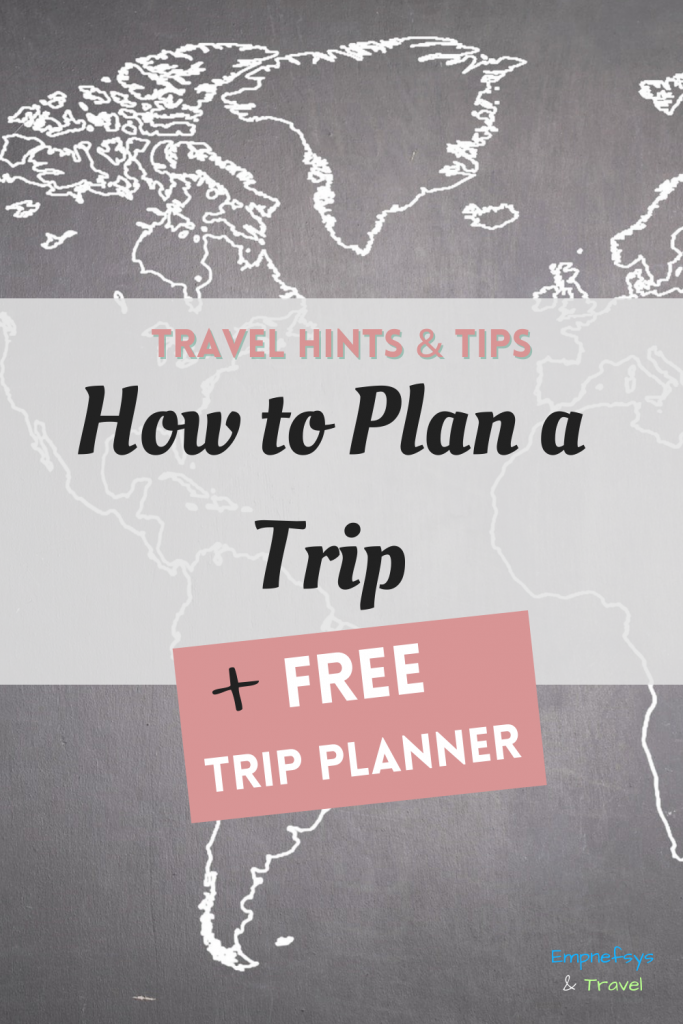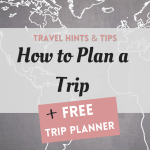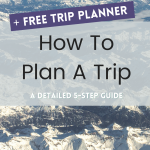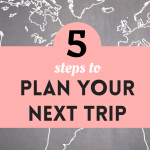Read this guide for how to plan a trip to find all you need to do when preparing for an excursion abroad. Don’t forget to grab your FREE Trip Planner downloadable, to accompany you in the process.
Disclosure: Please note that this post contains affiliate links. This means that if you click on a link marked with [AD] and proceed to make a purchase, I may earn a small commission at no extra cost to you.
Planning and organising a trip may sound like a lot of work, but who said that it isn’t a fun task? In fact, this is my favourite part of the whole ‘going on a trip’ thing.
Below, you will find the series of steps I follow when I am planning a trip. It includes all the details I need to gather before getting into the itinerary design phase and other useful things about the destination.
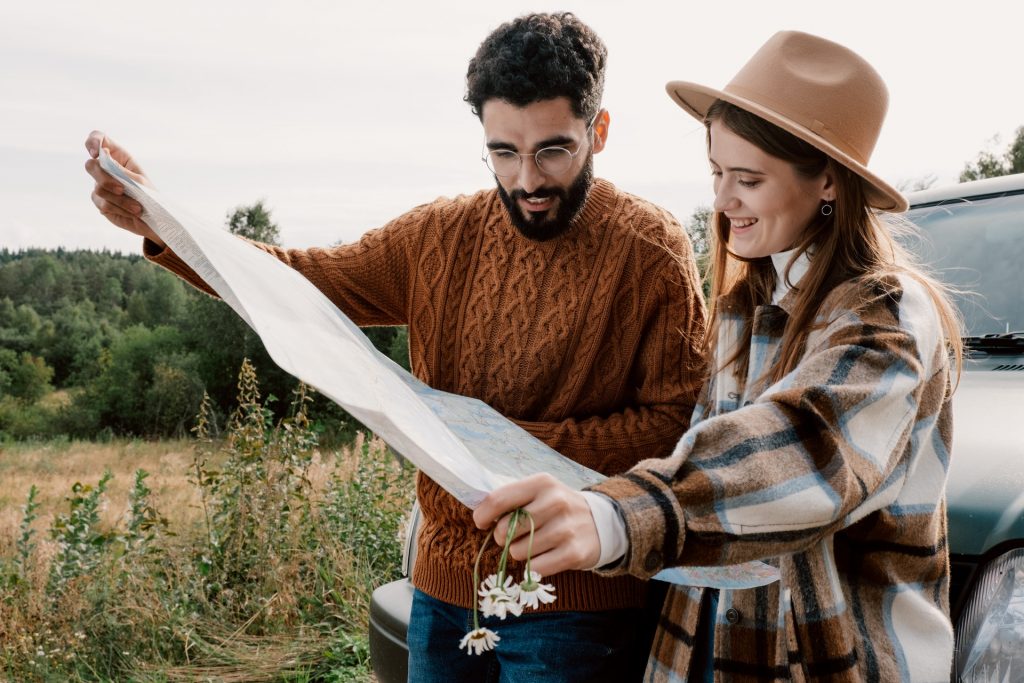
And for the first time, I have created a FREE downloadable template for you to go along with this guide. It is called the Trip Planner and it has fillable sections, where you can write down (or type in) all the tiny bits and pieces that you need for your trip. To access it you just need to subscribe to Empnefsys & Travel’s monthly newsletter.
Share it with your co-travellers to keep track of where you want to go and what you want to visit or keep it for yourselves and note down interesting things you find online. There are many ways that you can use the Trip Planner to prepare your solo or group trip smoothly and efficiently.

How to Plan a Trip: Summary of Steps
- STEP 1: Define the basics
- Decide on a destination
- Set your budget
- Decide the dates of your trip
- Agree with your co-travellers for the above
- STEP 2: Book the essentials
- Research and book flights
- Research and book accommodation
- STEP 3: Figure out transportation
- Arrange airport transfers
- Arrange transportation at the destination
- Research the use of public transport
- Book additional buses/train/private transfers (if necessary)
- Rent a car (if necessary)
- STEP 4: Find things to do at the destination
- Research places of interest
- Find museums and attractions to visit
- Book tours and day trips (if you want)
- Find unique food and drink options
- STEP 5: Purchase essential items
- Research for destination-specific essentials
- Make a packing list

Step 1: Getting Started
Firstly you need to decide on the destination you are going to visit and your budget. Often, there is not a straightforward way to do so and involves a bit of preliminary research to understand if a destination is right for you.
In many cases, you already have a destination in mind and you need to do some quick flight and accommodation searches to check the overall image. This usually works, if you don’t have a very tight budget and you are flexible to adapt depending on what is available.
On the other hand, if you do have a tight budget, then you need to prioritise keeping expenses to the minimum. Usually, one of the largest costs of a trip is flights, in which case you want to find a destination that you can reach cheaply from where you are based.
Another thing you should keep in mind is seasonality. Are you bound to school holidays or can you avoid them and hence, maybe find better prices? Is there a recommended season to visit a particular destination, such as avoiding the rainy or hot season? Do you have a limitation on when you can take leave off work or education?
Lastly, what are the entry requirements to get to your chosen destination? If you need to apply for a visa, check that you meet the criteria and have enough time to make the necessary applications.
All these are things you should consider before settling on a destination. Of course, if you are travelling in a group with people having different opinions, this may take longer than say for a solo traveller. However, after the initial details are confirmed (i.e. destination, budget, dates and the total number of travellers), the rest should easily fall into place.
How to use the FREE Trip Planner
Go to your trip planner and fill in your:
- Trip Name: Come up with a fun name for your trip or choose something basic, like Germany Trip or My Big Winter Adventure to the Canadian Rockies.
- Destination: Write down the country (or countries) and the city (or cities) to visit.
- Language: If you are visiting a country with an official language other than English, make sure to learn a few words in that language. They can go a long way when trying to communicate with locals.
- Currency: Note the local currency and the exchange rate to your own currency (if different). This can help you when researching prices later on, and it can remind you to make the necessary currency exchange arrangements before your trip.
- Visa Requirements: Check if you need a visa to enter the country and how long you can stay.
- Dates: Once you confirm the dates, write them down here.
- Budget: Write down the total budget per person and have it as a reminder when you need to make flight and accommodation decisions. No need to get into the details here, you can do that in a separate trip budget spreadsheet.
- Co-travellers: List your co-travellers and start getting excited, you are one step closer to your trip becoming a reality.

Step 2: Book the Essentials
Of course, when talking about booking the essentials I mean flights and accommodation. Many people, including myself, tend to book their flights first before deciding anything else.
Book your flights
There are many ways you can get started to book your flights. You can go directly to your local airline website and book from there or use a flight search engine like Skyscanner [AD].
The last option is my preferred way to search for flights because I can see which airlines fly to the destination I want and compare prices and times. Besides, Skyscanner [AD] has the option to search for flights to Everywhere which is great for brainstorming destinations and finding cheap tickets.
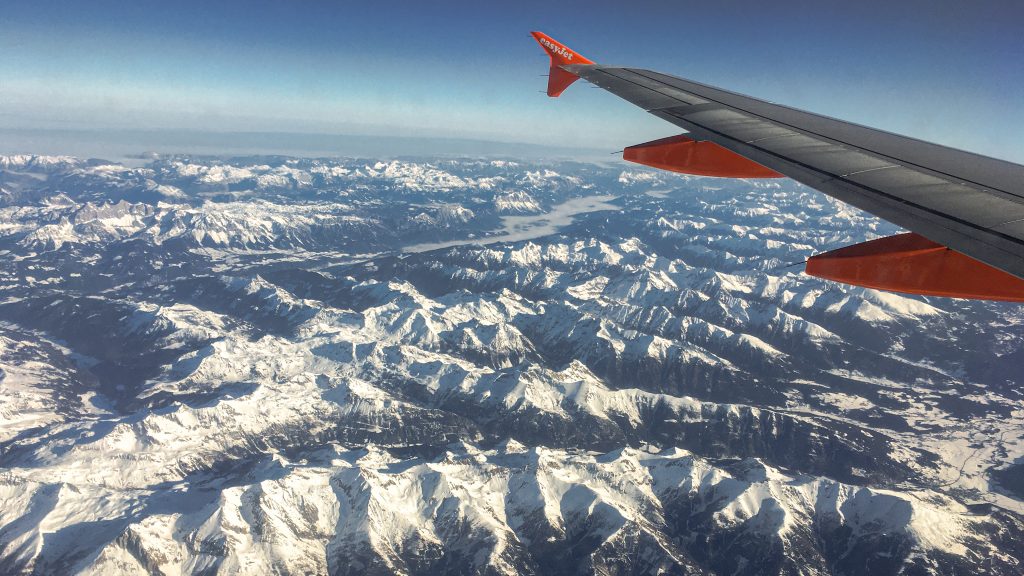
When to book your flights?
Now, this is a point that people debate a lot. Should you book the flights as early as possible, wait for 56 days before a trip because this is when the best prices are or leave them last minute?
I’m an advance planner, and I like to know that my trip is confirmed before doing any further research. For me, my trip confirmation comes once I book the flights. Then, I can start looking into accommodation and things to do in more detail.
So my general rule is to aim to book an international trip 3-6 months in advance and a regional trip (for me this is anything within Europe) up to 3 months before. Of course, in most cases, it is not as simple as that, and there are always exceptions, but let’s save this discussion for another time.
Book your accommodation
Now that flights are booked, let’s move on to accommodation. There are different types of lodging you can book, and what you decide to book depends only on your preferences. You can book the cheapest hostel, a mid-range chain hotel or a boutique resort.
My preferred way of searching for hotels is to do it through a hotel search engine, like Booking.com [AD]. In this way, you can compare prices and hotel amenities very easily and quickly. If you even want to compare prices between the different booking platforms, you can try TripAdvisor [AD] or Skyscanner [AD].
In addition, you can go to the hotel’s website and book. In some cases, you may find better deals if you book directly with the hotel, and you could even benefit from loyalty schemes. For example, Radisson Blu [AD] hotels have a lot of offers and lower prices for loyalty club members year-round.
When I want to look for apartments or other types of rental properties, I search on Airbnb [AD]. There are options for different budgets and they are great if you are going somewhere with a group of friends as you can get a shared flat and split costs.
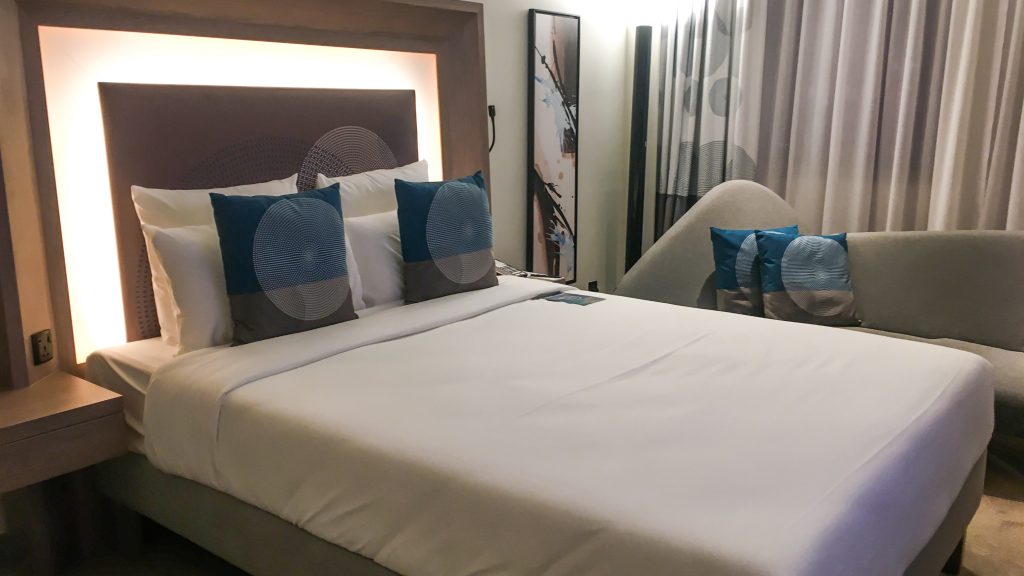
How to use the FREE Trip Planner
Go to your trip planner and fill in your:
- Flights: Write down the details of your flights. Note the departure and destination airports, the dates and times, the flight number and the booking reference. You could also specify the airline, the website you booked your flights from, the price of the ticket, whether luggage and meals are included and the total price.
- Accommodation: Similarly, write down the details of your booking, i.e. name of the hotel, neighbourhood, star classification, room type, meals and other amenities included, the website you booked through and the booking reference.

Step 3: Figure out Transportation
Good job! You have completed the most time-consuming part of the process, especially if you are travelling with a group of friends this must have been challenging. This step is about figuring out some final logistical details. It’s not the most exciting part, but it is essential to have it sorted in advance to have a smooth trip.
Note that this step requires some knowledge of what you are going to do on your trip. So, after you do an initial search of what transportation options are available, come back after completing step 4 to make any necessary bookings.

Airport Transfers
If you are planning a simple return trip, then you will have four transfers. To and from your departure airport, and to and from your arrival airport.
Let’s start from the easy part: getting to and from your departure airport. This should be straightforward as you should already know what to do. If you need to book any taxis, train tickets or even hotels, then put a reminder to do this closer to the time. The important thing to do at this stage is to have the plan set.
Next, let’s consider the same for your destination. How are you getting to your hotel? Is there a shuttle bus service, would you need to book a taxi, rent a car, take the train or use public transport? If you are opting for public transport consider from where you are going to buy your tickets from and when the last service for the day is.
If you are travelling around Europe check out National Express and EasyBus, while Go Airport Shuttle [AD] focuses on US destinations. These companies offer shuttle bus services between different airport and cities.
Moving around at your destination
Similarly, this step asks you to research different options and decide the most convenient for you. You can choose to rent a car or use public transport to move around. If you choose the latter, there is not much you can do now, other than doing some research on costs and ticket selling locations.
On the other hand, if you choose to rent a car, then you should start considering your options and even book something. The are many comparison websites to rent your car from like Skyscanner [AD] and RentalCars.com [AD]. Alternatively, you can choose to book directly with one of the popular rental car companies like Europcar [AD] or Avis [AD], although their prices are usually more expensive.
Make additional transportation arrangements
This step also involves figuring out and booking long-distance transportation. For example, if you are going to change cities halfway through your trip or going on a day trip, how are you doing that? Do you need to book a bus or train in advance, or will you get a private transfer?
In general, these details can be finalised shortly before the trip, but if you are talking about high-speed trains like Eurostar, then booking some time in advance may allow you to get better prices.
You can look for trains around Europe using Trainline [AD] and for bus trips you can use Omio [AD].
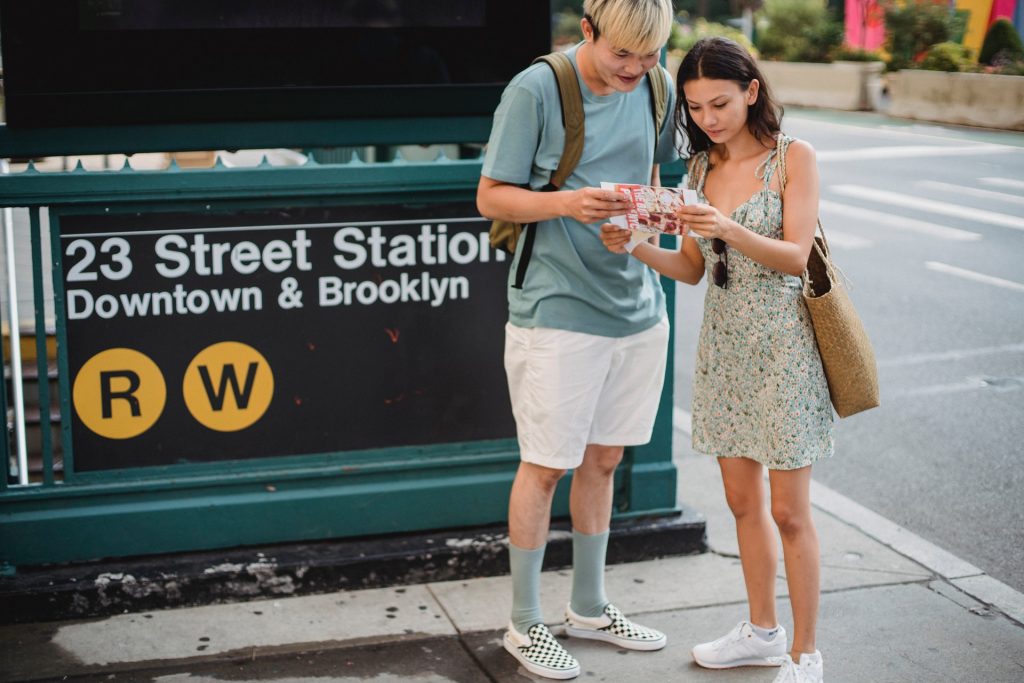
How to use the FREE Trip Planner
Go to your trip planner and fill in your:
- Airport Transfers: Write down the means of transport you will use to get to and from your departure airport and to and from your arrival airport. If you can’t finalise these yet, note your options and come back when the details are confirmed to record the details. For example, if you a taking the train, note its departure time or if you are taking a taxi note your agreed pick-up time and the phone of the taxi driver.
- Local Transfers: Write down how you are planning to move around at your destination. Mention the details of your car rental (i.e. company, car type, booking reference, etc.) if you are renting one. Alternatively, note a website where you can find more information about public transport.
- Long Distance Transfers: Lastly, write down the details of any additional bus, train or private transfer routes you booked or you need to book.

Step 4: Find Things to Do at the Destination
Finally, it’s time to start researching all the fun things to do at your chosen destination. I’m sure you already have some in mind. It may be a well-known monument, like the Eiffel Tower or a café a friend recommended.
What you have to do now, is to create a list of all the places you want to visit and categorise them. Later, you can use this list to decide what to do on each day of your trip. If you are like me, and you like to create itineraries this list will be your base on which you will plan your daily activities.
Find things to do at your destination
Start with a general search on Google and Google Maps and see what places come up. Then continue, you research further and start researching by reading peoples experiences. You can even search here on Empnesfys & Travel; I may not have written about every country in the world, but I am sure you will find useful information in the in-depth guides I have written up to now.
If you are planning for a bigger trip, then you may want to purchase a (physical) travel guide. They have lots of useful information created by people who know the destination extremely well. My favourite brand is Lonely Planet, but there are a lot more out there.
Two other places that people are using a lot recently to find places to visit are Instagram and Pinterest. You can easily search for locations and get visual results back, which is great for getting ideas and inspiration.

Tours and Day Trips
Another thing you may want to consider is tours and day trips. As they are primarily paid activities, you need to look for them on websites like Viator [AD] and Get Your Guide [AD]. These websites also tend to sell tickets to other paid attractions in a destination, like museums, tourist attractions and shows.
Friendly tip: Before booking any of the tours check the inclusions and exclusions. The reason that a particular day trip is half the price of another one may be because entry tickets to the advertised attractions are not included. Also, check that the start time and pick-up point are convenient for you.
Food and Drink
The last category of things to do in a destination is food and drink. Here, I want you to note down any notable places you came across while doing your research for things to do. If there is a must-try dish, then it should probably be mentioned many times in the guides you read. So, do some further research and find a place that has this dish and note it down. To do this you can use TripAdvisor [AD] and food and travel blogs.
Instagram is also a good source for this category. Follow local food bloggers and see where they go. You may find cafés or restaurants that you want to visit by browsing through their photos.
International chains are also good (backup) places to have on your list. Hard Rock Café even offers rewards for visiting their restaurants (and hotels) around the world.
Of course, if there are any fine dining restaurants that you want to try, remember to make a reservation. You don’t want to be turned down last minute.

How to use the FREE Trip Planner
Go to your trip planner and fill in your:
- Places of interest: Write down any national monuments, public squares, parks, markets or other places you want to visit to walk around or have a quick look. Remember to also mention the neighbourhood, they are in to help you when creating your daily plan.
- Museums and attractions: Write down any museums and tourist attractions you want to visit. Mention their prices, if they need advance booking and other comments you have (e.g. “museum closed on Monday”, or “should not miss Room 5”). Here, you can also mention any shows you booked.
- Tours and day trips: Book any tours you want to go on and note the details here.
- Food and drink: List any places that you may want to try while there. If a reservation is required by any of them, make a note to book closer to the time. Then, come back and record the details.
Once you are done, remember to go back to step 3 and finalise any outstanding details regarding transportation.

Step 5: Purchase essential items
Some destinations require you to purchase specific items. It could be something simple, such as a new pair of packing cubes or something that needs more thought, like a pair of snow boots. The aim of this stage is to help you prepare for your trip better and not rush a day before your trip to collect everything (or have to buy it from the airport).
Do some research and see if people recommend, bringing anything else that you may not have otherwise thought of, e.g. a water filter or a mosquito repellent.
Grab some essentials from Amazon: [AD]
How to use the FREE Trip Planner
Go to your trip planner and fill in your:
- Packing List: Use this space to write down any essential items that you need to buy or that you need to remember to pack. You don’t need to list every item that you are about to pack, but those that you are more likely to forget.

Don’t forget, safety comes first!
Before closing your Trip Plan, there is one last section you should fill in: Safety. There, you should include emergency numbers, travel insurance details and anything else you found out during your research regarding your safety.
So, do a quick Google search (emergency number + <your destination> should be good) and write down the results. It’s always good to have these numbers at the back of your mind in case you need to use them. Check at least for police, ambulance and fire brigade numbers.
Did you find any important safety information during your research? Maybe it’s a street or a parking lot you should avoid at night, or a practice you should follow to avoid getting in trouble. Take a note of them, and remember to implement this advice for your trip.
Moreover, write down the address of your accommodation and always carry it with you on a piece of paper. You never know when your phone, will be out of battery and you don’t want to be stranded without directions.

Lastly, this section ties with Travel Insurance. If you don’t already have an annual plan or are not covered in any other way, consider purchasing a plan. Remember to adjust it to your needs and include all the necessary add-ons (e.g. winter sports cover). There are many travel insurance providers to choose from. If you are unsure where to start your search and you are UK based, then check out StaySure [AD].
Use your Trip Planner to note down the details of your insurance and any important phone numbers you need to use for claims.
Ready to Go!
Congratulations, you made it to the end! You are now so many steps closer to your trip than at the beginning. You can now relax and wait for your trip to start. Or you can start frantically creating a detailed itinerary with all the information you have collected. Remember to periodically check your Trip Planner, to complete any outstanding actions and record any updates.
Happy planning!
P.S. How did you find the structure of this guide? Did you like the free Trip Planner? Is there anything I should improve for the next time I create something similar? Let me know in the comments!

Did you like this post? Save it for later!
